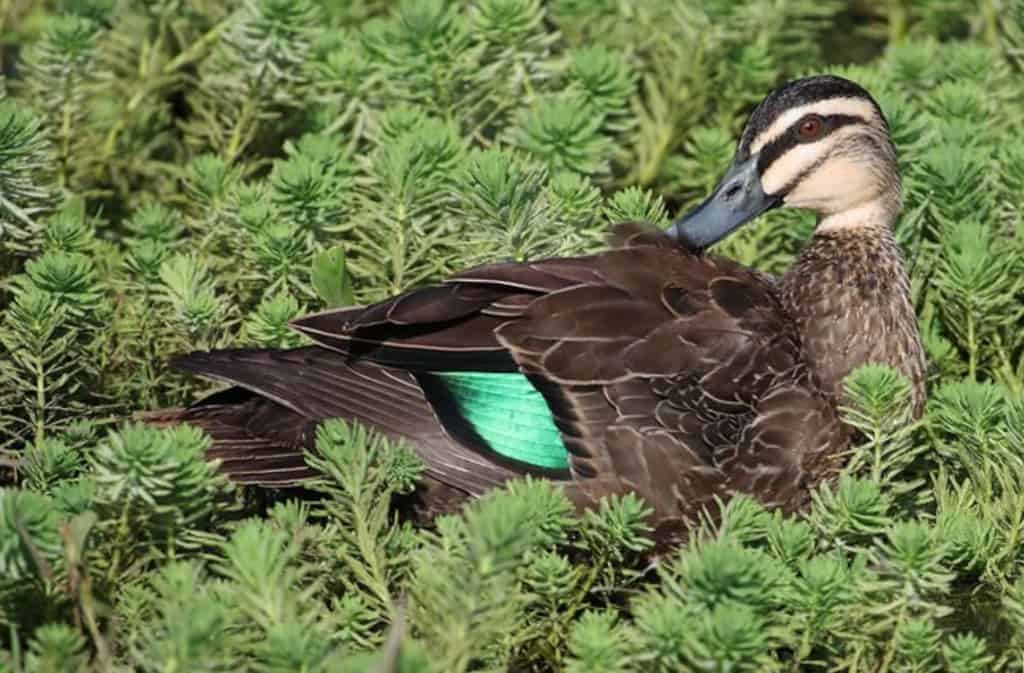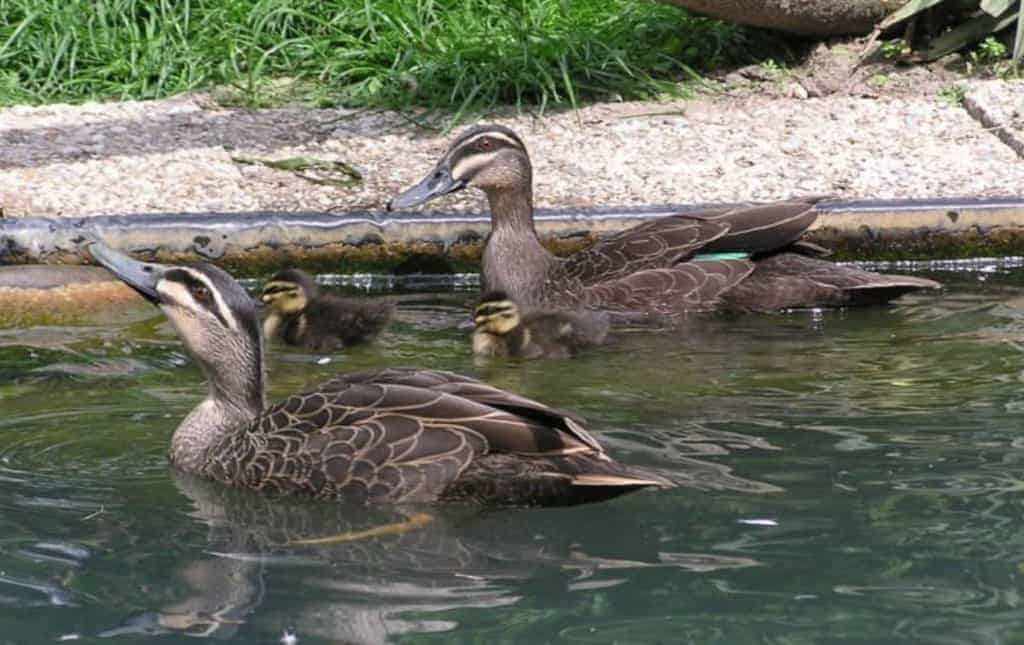Pacific Black Duck

The Pacific Black Duck has an extremely large range, so is classed as Least Concern on the IUCN Red List. Two subspecies are recognised in the IOC World Bird List:
- Australasian A. s. superciliosa
- Pelew Island A. s. pelewensis

Anas superciliosa
The Pacific Black Duck is part of the Mallard complex (their congeners that aren’t pintail or teal). There is little variation between the sexes. The drake is very slightly bigger and brighter.
These mottled brown dabbling ducks have a distinctive head pattern, with the black mask running through the eye. A little darker than a female Mallard, and the bright metallic green speculum with its black border is often noticeable in flight.
Common throughout their range, they are found on or beside ponds, wetlands, and rivers. Feeding is mostly at night, when they dabble for plant matter, small crustaceans, molluscs and aquatic insects. If food and water are plentiful, they stay put, but if they have to be nomadic, it is to follow the rains and floods.

In New Zealand, it is usually known as the Grey Duck or Pārera. In recent decades, it has declined sharply in numbers there, due to competition from and hybridisation with the introduced Mallard.
Also in New Zealand, loss of wild habitats is considered to be a leading cause in declines, and there is a slow decline through Melanesia due to hunting and habitat degradation. Such habitat destruction is also occurring in Australia, but birds there have proved to be more able to utilise artificial habitats.

First UK breeding records of the Pacific Black Duck were from the London Zoo in 1867.
The nest site is usually hidden among tall grasses, rushes or in a tree hollow. Some grass is pulled into the nest and it is lined with feathers. The duck sits on her 8–12 greenish eggs for 26–32 days.
Wild Pacific Black Ducks usually have 2 clutches per year.
Share this page